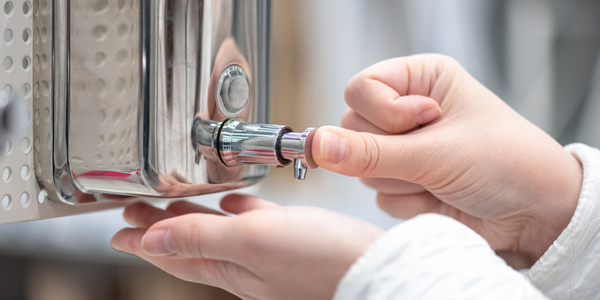Cobra Aero Reimagines the Air-Cooled Combustion Engine Cylinder using Field Driven Design
Customer Company Size
SME
Region
- America
Country
- United States
Product
- nTopology
- Renishaw AM500
- Direct Metal Laser Sintering (DMLS) system
Tech Stack
- Field-Driven Design
- Multiphysics Simulations
- Additive Manufacturing
Implementation Scale
- Enterprise-wide Deployment
Impact Metrics
- Productivity Improvements
- Innovation Output
- Customer Satisfaction
Technology Category
- Analytics & Modeling - Generative AI
- Functional Applications - Manufacturing Execution Systems (MES)
Applicable Industries
- Aerospace
- Automotive
- Consumer Goods
Applicable Functions
- Product Research & Development
Use Cases
- Additive Manufacturing
- Manufacturing System Automation
Services
- Software Design & Engineering Services
- System Integration
About The Customer
Cobra Aero is a US-based manufacturer specializing in UAV drone engines. The company invested in advanced manufacturing technologies to stay competitive in the market. They focused on redesigning key engine parts for Additive Manufacturing to achieve multiple advantages, including improved efficiency and performance. Cobra Aero's team utilized nTopology's field-driven design and simulation capabilities to develop a new product following DfAM best practices. The company aimed to create high-performing products that meet multiple requirements and adapt to market demands quickly. Cobra Aero's innovative approach and investment in advanced technologies have positioned them as a leader in the UAV drone engine manufacturing industry.
The Challenge
Cobra Aero, a US-based manufacturer of UAV drone engines, faced the challenge of staying competitive in the market. They invested in a Direct Metal Laser Sintering (DMLS) system to redesign key parts of their engine for Additive Manufacturing. The team aimed to achieve multiple advantages, including improved efficiency, weight requirements, and minimal support during manufacturing. They sought alternatives to traditional fin designs for heat transfer and became intrigued by lattice structures used in heat exchanger design. The challenge was to optimize the lattice structure for heat transfer while meeting the performance and manufacturing requirements.
The Solution
Cobra Aero used nTopology's advanced modeling capabilities to generate different sizes of lattices with varying strut thickness. They filled the lattice inside their cylinder geometry and terminated it with smooth transitions and fillets between the struts. To optimize the lattice for heat transfer, they used nTopology's field-driven design capabilities to spatially control the properties of the lattice. They utilized multiphysics simulation results, including temperature, airflow velocity, pressure drop, and mechanical stresses, to generate a highly optimized structure. The lattice structure was tightened in areas where conduction was more important and loosened in areas where convection was more important. Once the design was finalized, they used nTopology's slicing capabilities to export a CLI file that was sent directly to the Renishaw AM500 system for manufacturing. Testing showed that the new lattice structure design was more efficient than the fin design, requiring less airflow to maintain proper engine temperature in every loading case and at every RPM.
Operational Impact
Quantitative Benefit

Case Study missing?
Start adding your own!
Register with your work email and create a new case study profile for your business.
Related Case Studies.
.png)
Case Study
Improving Vending Machine Profitability with the Internet of Things (IoT)
The vending industry is undergoing a sea change, taking advantage of new technologies to go beyond just delivering snacks to creating a new retail location. Intelligent vending machines can be found in many public locations as well as company facilities, selling different types of goods and services, including even computer accessories, gold bars, tickets, and office supplies. With increasing sophistication, they may also provide time- and location-based data pertaining to sales, inventory, and customer preferences. But at the end of the day, vending machine operators know greater profitability is driven by higher sales and lower operating costs.

Case Study
Airbus Soars with Wearable Technology
Building an Airbus aircraft involves complex manufacturing processes consisting of thousands of moving parts. Speed and accuracy are critical to business and competitive advantage. Improvements in both would have high impact on Airbus’ bottom line. Airbus wanted to help operators reduce the complexity of assembling cabin seats and decrease the time required to complete this task.

Case Study
Aircraft Predictive Maintenance and Workflow Optimization
First, aircraft manufacturer have trouble monitoring the health of aircraft systems with health prognostics and deliver predictive maintenance insights. Second, aircraft manufacturer wants a solution that can provide an in-context advisory and align job assignments to match technician experience and expertise.

Case Study
Integral Plant Maintenance
Mercedes-Benz and his partner GAZ chose Siemens to be its maintenance partner at a new engine plant in Yaroslavl, Russia. The new plant offers a capacity to manufacture diesel engines for the Russian market, for locally produced Sprinter Classic. In addition to engines for the local market, the Yaroslavl plant will also produce spare parts. Mercedes-Benz Russia and his partner needed a service partner in order to ensure the operation of these lines in a maintenance partnership arrangement. The challenges included coordinating the entire maintenance management operation, in particular inspections, corrective and predictive maintenance activities, and the optimizing spare parts management. Siemens developed a customized maintenance solution that includes all electronic and mechanical maintenance activities (Integral Plant Maintenance).




